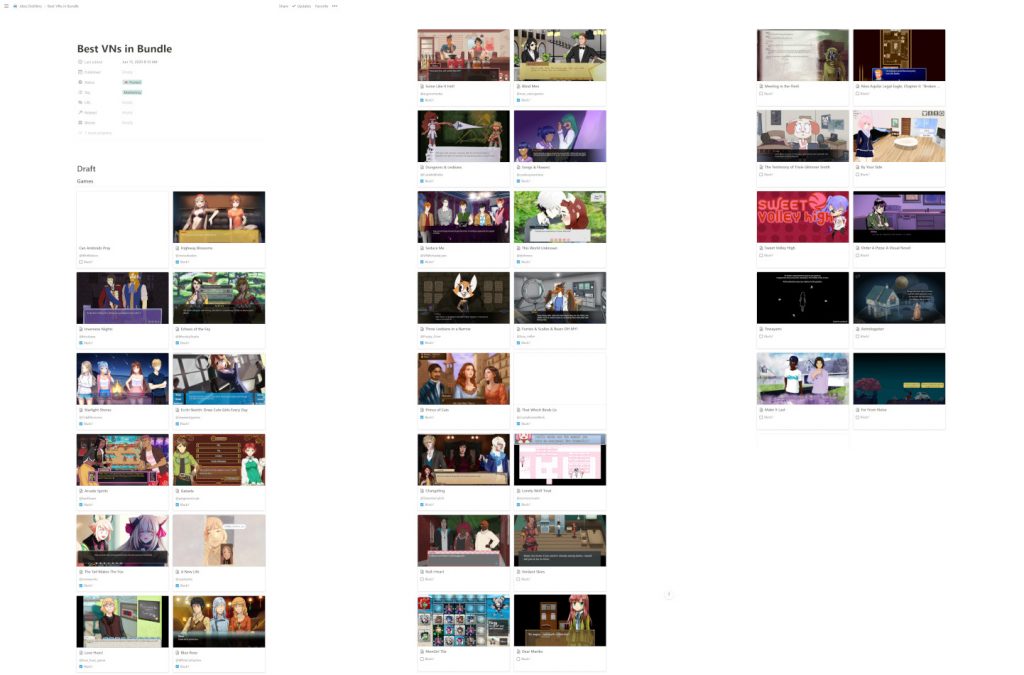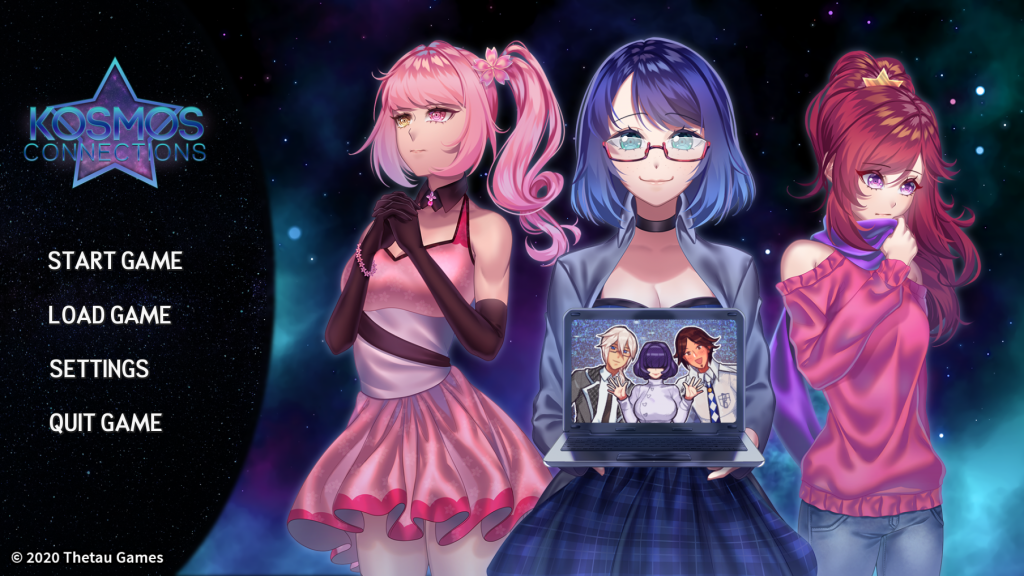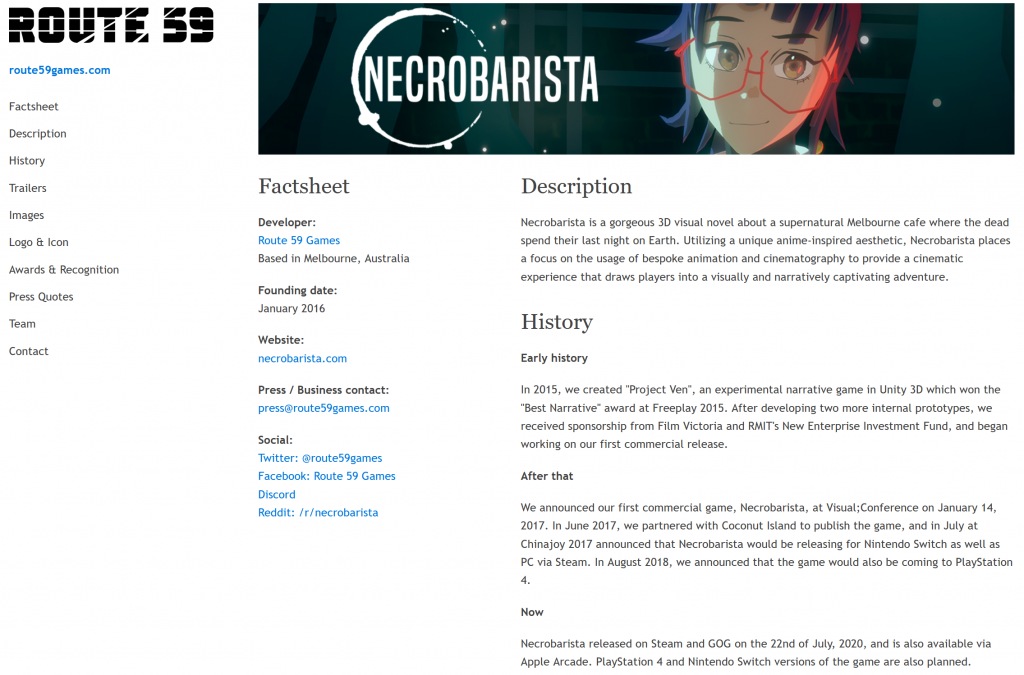
There are a lot of new games coming out every day. By the time you’ve finished reading this article, 50 more games will have been added to Steam, Itch, Epic Games Store, etc. In a crowd like that, it’s very hard to stand out. That’s why you must put in the effort for your game to get any attention at all.
Luckily, there are a number of straightforward things you can do to improve your chances. If you want attention for your game, it often starts with writing a good marketing story.
Learning to market yourself
Writing marketing copy for your game is not something that comes naturally to many gamedevs. We are often so focused on making a great game that we forget that people have to pay attention to it too. Only then can they be interested in buying it. Worse still, we often feel “dirty” when we promote our work. As if it’s a bad thing to talk about building a game for others to enjoy!
You must rid yourself of this mentality if you wish to succeed as an indie game developer. You can neglect marketing, but it will be at your own expense. And you’re probably already used to wearing many hats, so what’s more on the pile?
I’ve been running a newsletter that highlights games about love, sex, and romance for a while now. And it has given me some perspective on what makes some games easier to write about than others. Let me show you what I’ve learned and how you can apply it to your own game.
Separating the wheat from the chaff
My journey as a copywriter for sexy games started with the Bundle for Racial Justice and Equality. This bundle was an initiative by ~1400 game creators in the summer of 2020 to raise money in support of the Black Lives Matter movement. Over 1700 games, experiments, artworks, and more were included and the bundle ultimately raised more than $8 million dollars.
I sifted through all 59 (!) pages of games in the Racial Justice bundle by hand and wrote down anything that looked sexy, romantic or both. I ended up with a sizable list of games that roughly fit the bill. For each of these, I then evaluated whether I could actually summarize them in a tweet.
In the end, I put the following games in a thread on Twitter:
And a few days later, I followed up with another twelve games in a thread.
But I noticed the same problems propping again and again when trying to summarize these games:
- Not always sure what a game is about
- Unclear who worked on it
- Don’t know what the game looks like
A lot of the games in the bundle didn’t make it easy for me to write about them!
Organizing the work
There were 47 games in total that I considered writing about. I ultimately ended up writing about 32 games in the two threads on Twitter. The rest were rejected for either not being relevant enough or for being too much effort to write about.

I kept myself organized by putting it all into Notion and keeping track of a number of properties:
- Link to the store page
- Twitter presence of creator(s)
- Screenshots
- Short description of the game
It’s interesting to look at this list now half a year later. I recognize a number of games by creators that I now keep in touch with regularly!
These people often had great pages for their games, with a good pitch and screenshots to show off their work. And they were active on Twitter as well, which made it easy for me to keep in touch. But that definitely wasn’t the case for some of the other pages.
Extracting the info
When I was summarizing the games in the bundle for my Twitter thread, I didn’t always find the info I needed straight away. I sometimes had to spend a lot of time and effort to extract it myself. In the worst case, I would actually have to play the game in order to find out whether it could be relevant. Perhaps that doesn’t so bad, but I had thirty-two games to go through. I definitely couldn’t afford to do that for all of them!
I was putting in all this unpaid labor because I was using this thread on Twitter as a way to both raise my profile and improve my copywriting skills. But what I did for these games in the bundle isn’t so different from what actual game journalists do all day. Ironically, I wouldn’t have had so much patience with these games if someone did pay me to write about them!
I think it’s a good idea to make sure your store page provides some basic info about your game. Based on my experience with this bundle, here’s what I think you should focus on.
Nobody has time for that
First, assume that your audience does not have a lot of attention to spend on your game. Imagine that you just spend all day at work, coming home to make dinner and do the laundry. Now it’s 8:30 PM and you want to try a new game. Would you have a lot of patience for a store page that makes it hard to find out basic info? Hell no!
So when you write your store page description, keep that target audience in mind! Don’t be mysterious and get the required info out immediately.
1-minute rule
A good rule of thumb is to assume that someone will only look at your page for 1 minute. After that, they decide to either continue reading or move on to the next game in their queue.
If you have a page for your game already, you should consider running an experiment. It requires a willing participant that hasn’t seen the page yet. Here’s what you do. Open your page on your laptop or tablet without showing it to your participant. Tell them they have 60 seconds to evaluate it. Start a timer and take the device away when the time is up.

Now ask them to pitch your game back to you. Tell them to use any detail they can recall from what they just saw.
What you are looking for in their answer is whether they remembered the bits that matter:
- Can they describe what the game looks like?
- Do they know what makes the game interesting?
- What kind of story would they write about your game?
And that last question is really the most important one. Because a good story indicates that your marketing story comes across well. A marketing story is exactly what journalists need to evaluate whether a game is worth their time and their attention.
Providing a story
You should not consider journalists to be adversaries, but their goals aren’t necessarily aligned with yours. You are trying to sell a game while they are trying to sell a story.
A common mistake that developers make on their store pages is that they don’t consider the story they’re trying to tell. They give a description of the game and maybe some facts about it, but they don’t wrap it in a compelling narrative. If a journalist wants to cover your game, you are forcing them to dig a lot deeper to extract a story.
The story you tell about your game should ideally contain something novel or unique. It should be newsworthy. Let me give you a practical example.
Let’s imagine the following headline:
Local man launches Kickstarter campaign for visual novel
You probably wouldn’t click on that. Kickstarter campaigns have long lost their luster and can no longer be considered newsworthy. Visual novels are a dime a dozen as well. Yet I see this type of article all the time on the development blogs I follow!
Think like a journalist
Here’s a different headline:
Two-in-one mystery visual novel Kosmos Connections is starting crowdfunding
Same facts, different framing. We’ve now highlighted that the game is actually two visual novels in one, which makes it interesting. And we’ve made sure to drop the name of the game in the headline. Even if something isn’t fully paying attention, they’ll still get some basic facts about your game from this headline.
Of course, this wasn’t a random example, it happens to be a successful Kickstarter campaign that I was an advisor for. I helped the creator identify their unique selling point and made sure to highlight it in the copy.

And to prove that this story was compelling, see e.g. this story from NintendoEverything: Two-in-one mystery visual novel Kosmos Connections coming to Switch
That’s the power of a marketing story, baby!
What I’m trying to get across is that in order to write effective copy, you need to think like a journalist. And it starts by providing them with a good pitch to hang their story on.
How to write a good pitch
Check out this excellent talk from No More Robots about marketing your game on zero budget:
Mike Rose says that your pitch should have two components: a hook and a kicker. The hook should reel people in and the kicker leaves them excited and motivated.
The example he gives is of their game Descenders. They used to open by saying that it has a completely procedural world. But that isn’t very compelling: a lot of games have something similar. This is what I would call a “dry fact”: you can use it to flesh out an article about the game, but it shouldn’t be the foundation for a story.
But what makes Descenders unique is that it is an extreme downhill biking game. And when Mike combined that with their fact about procedural generation, he came up with the following:
Descenders is extreme downhill freeriding [the hook] through procedural worlds [the kicker]
Suffice to say that this was an extremely effective pitch for them.
Pitches are hard
So here’s a problem for you to chew on: it’s really freaking hard to write a good pitch. Coming back to the 32 games I covered in the bundle, I don’t blame them for struggling to come up with a good one.
But think of it this way: every day, hundreds of games are released every day on multiple platforms. What makes yours so special? I think you can always make one of three main arguments in your marketing pitch:
- Quantity – Our game has a lot of X
- Quality – The Y in our game is much better
- One-of-a-kind – Nobody else does Z
Once you’ve found your main argument, you can combine it with one of your dry facts to create a pitch with a hook and a kicker.
Putting it all together
Once you have figured out your pitch, you should compile a presskit. This is a resource for journalists to be able to quickly get the info they need to write about your game. Jaime Scribbles has written a wonderful article on how to make one for your visual novel, but her advice applies equally as well to other types of games.

The presskit includes a description of your game, ways for people to contact you, and screenshots that you’ve already approved. That last one is to make sure that your game comes across in the best way possible. For example, you don’t want screenshots that spoil a twist in your narrative!
The great thing about having a presskit is that you can use it for your store pages as well.
Summary
Marketing is hard. But there are easy ways you can improve your chances to get attention on your game:
- Providing a compelling marketing story
- Showing off your gameplay in screenshots
- Listing contact info for the developers
Get all these in and maybe you’ll be featured in my next newsletter. 😉